Morning on the Hoquiam River.
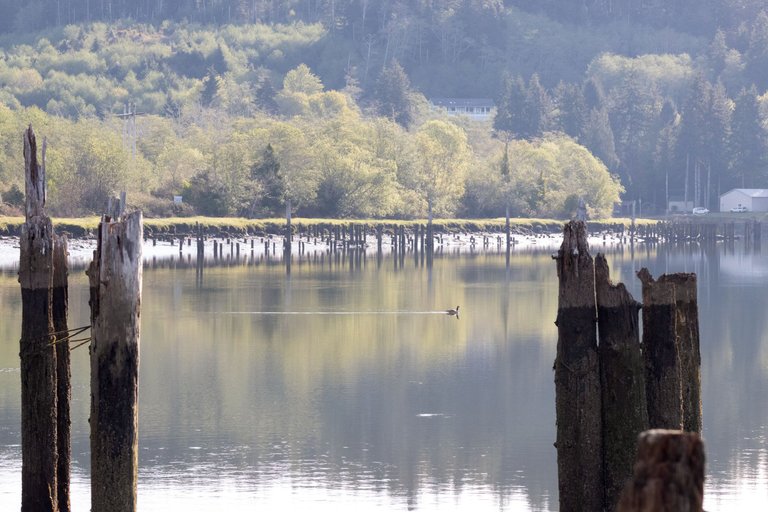
In one of the first bursts of spring for our region, near the Pacific coast in Washington state, I took my camera (and my coffee) to the riverbank to bask in the sun just rising over the hills.
I wasn't planning on a full photoshoot, perhaps just one or two images that I could use to fish for tokens on InLeo, but my feathered friends had other plans.
I hadn't been sitting there long when a Canada goose wandered over and began nibbling vegetation off a piece of driftwood.
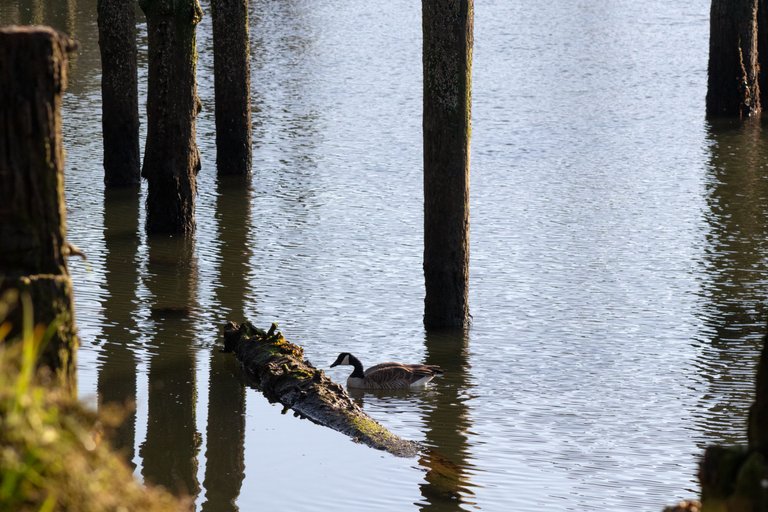
A bit of grass or seaweed stuck to its bill for a minute.
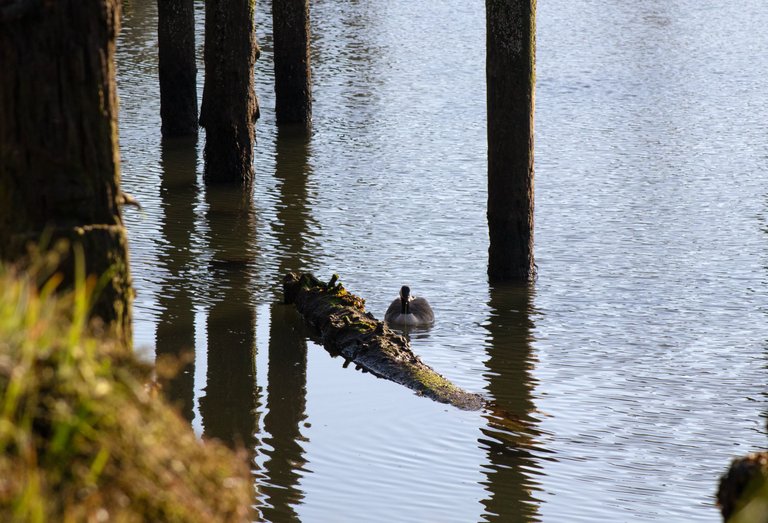
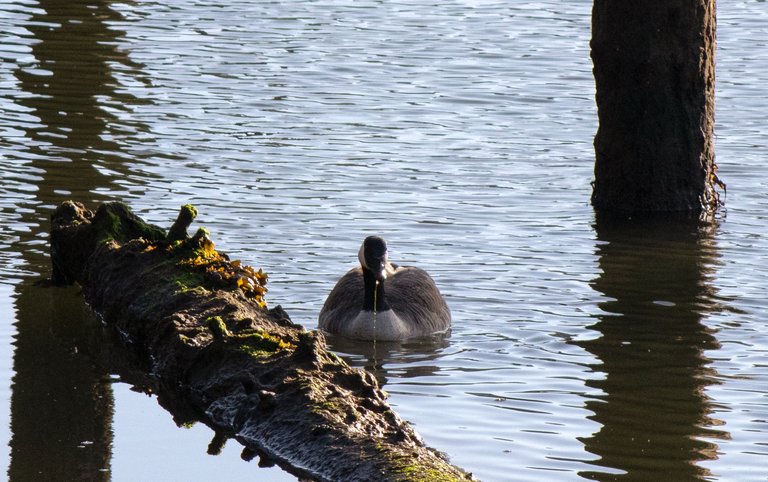
The goose seemed to be just sampling the buffet along the bank. It soon wandered upriver...
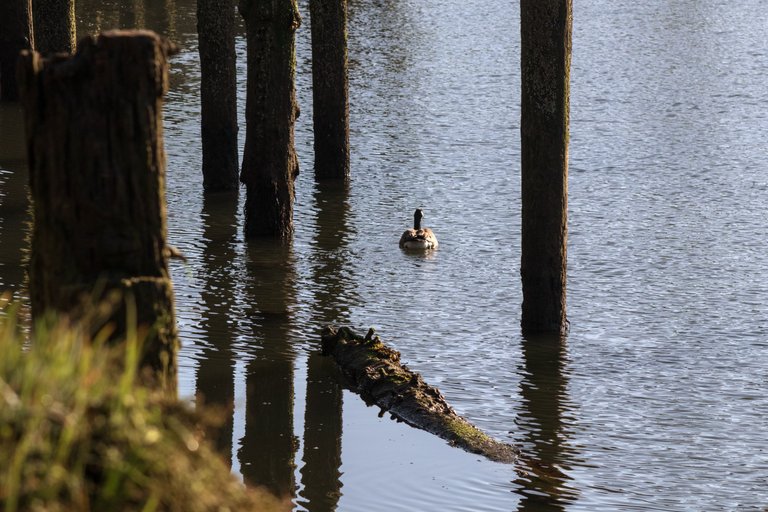
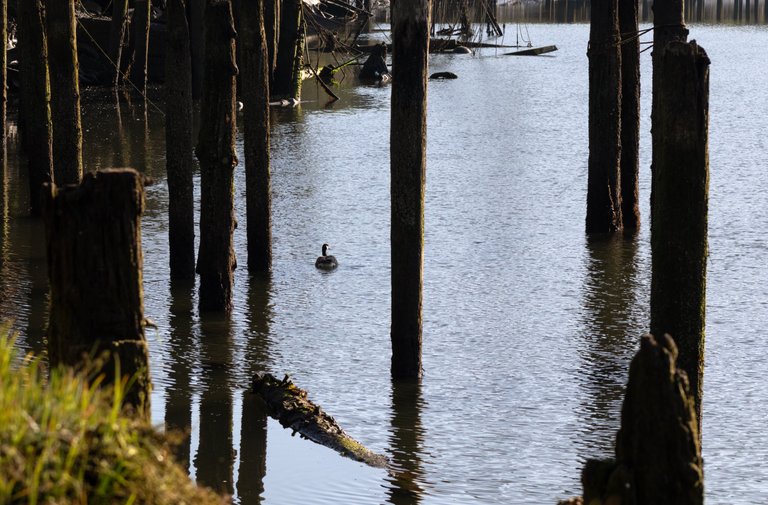
...toward a sunken vessel at the neglected moorage a few hundred yards away.
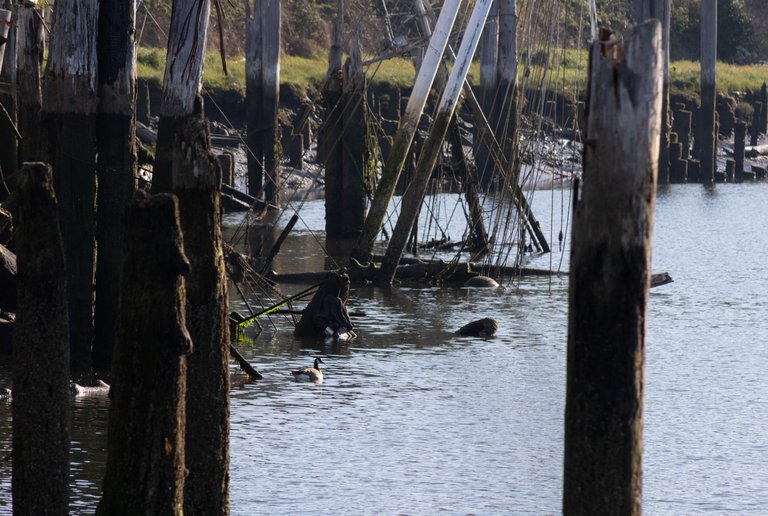
My attention was drawn away from the goose by two rock pigeons coming to roost on a dock piling directly in front of me.
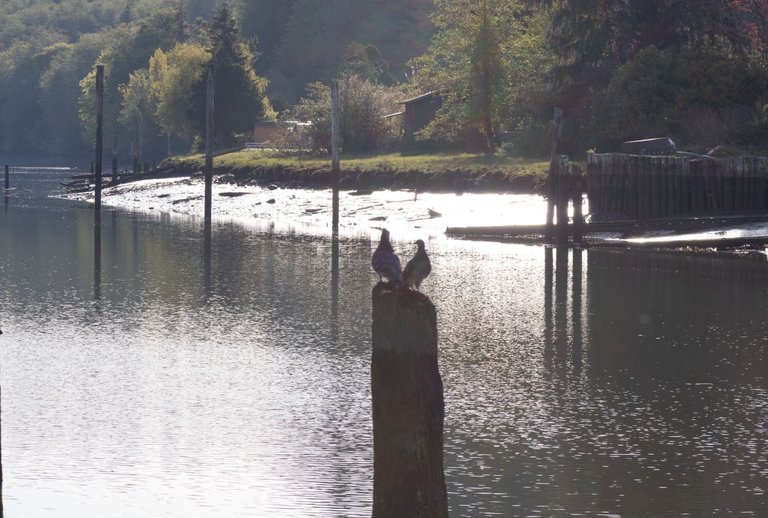
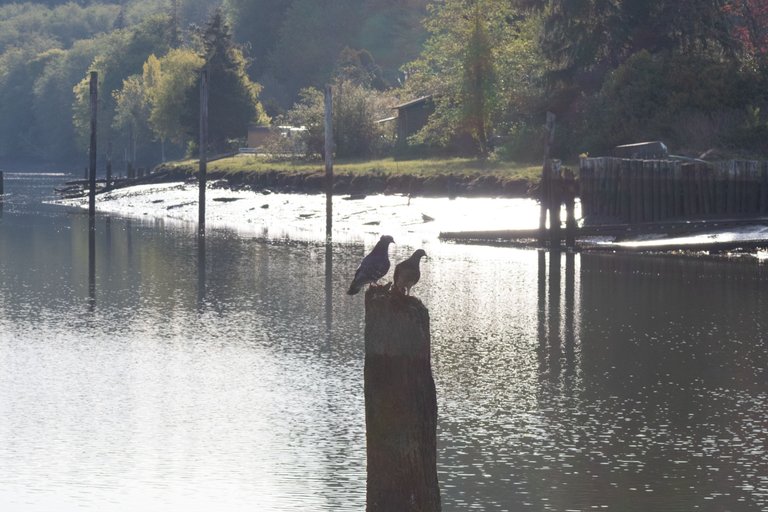
I often see these pigeons on the dock pilings here. (Perhaps I'm making a big assumption, thinking it's the same pair, but there are usually two when I see them, and they hang out in the same spot, so maybe it's a safe assumption.) This is the first time I've had the camera at hand when I've seen them.
One of the pigeons immediately flitted off to the right, but the other one pecked around for awhile.
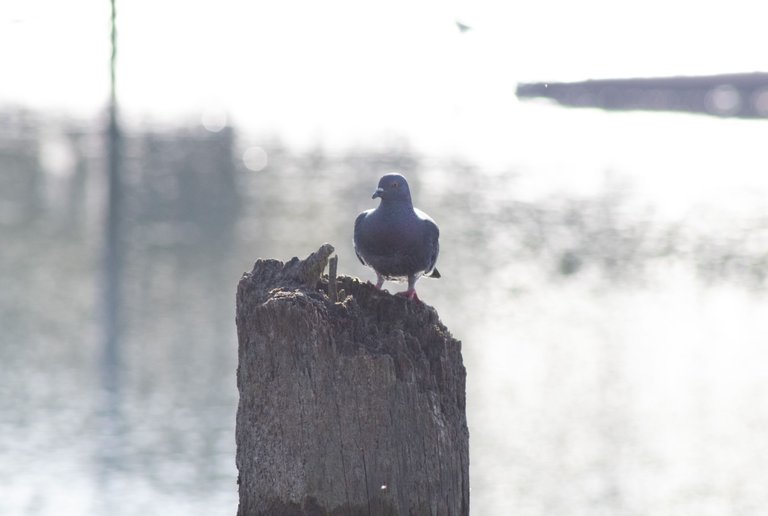
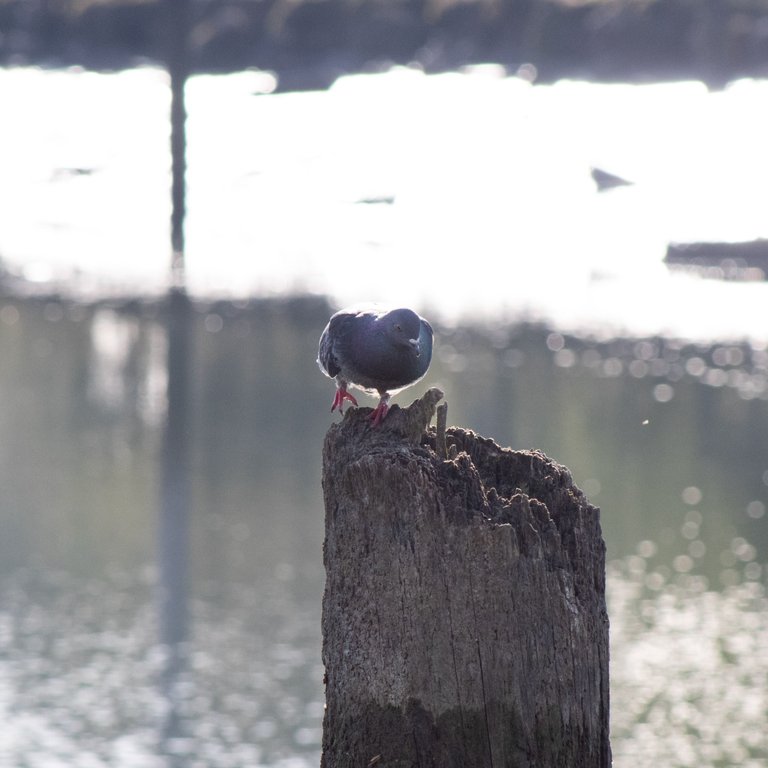
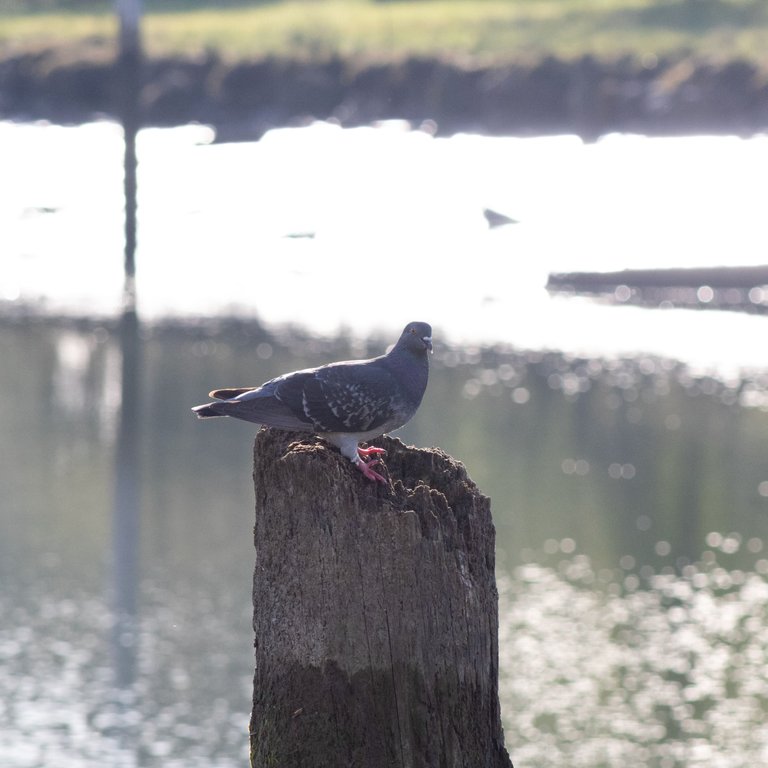
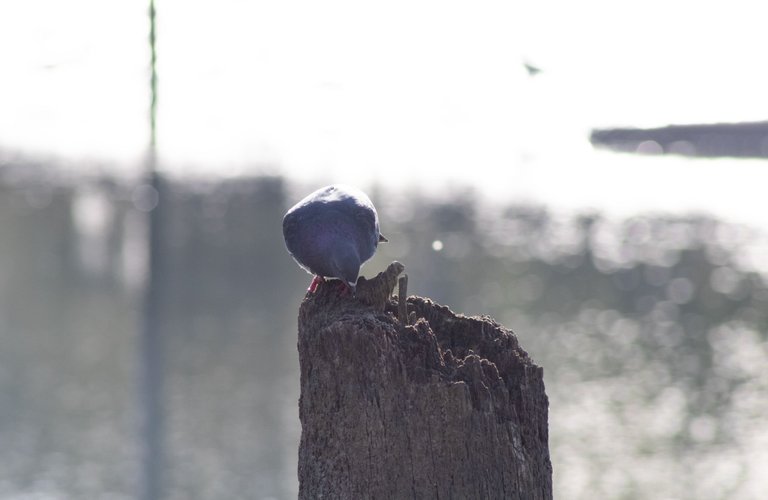
According to the Cornell Lab of Ornithology web site All About Birds, the rock pigeon has many different plumage patterns. This pair was of the pied variation, because of the white splotches on the wing.
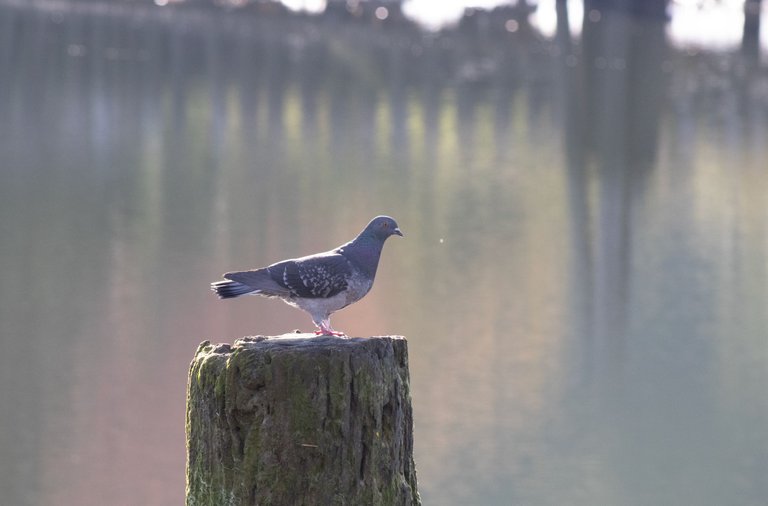
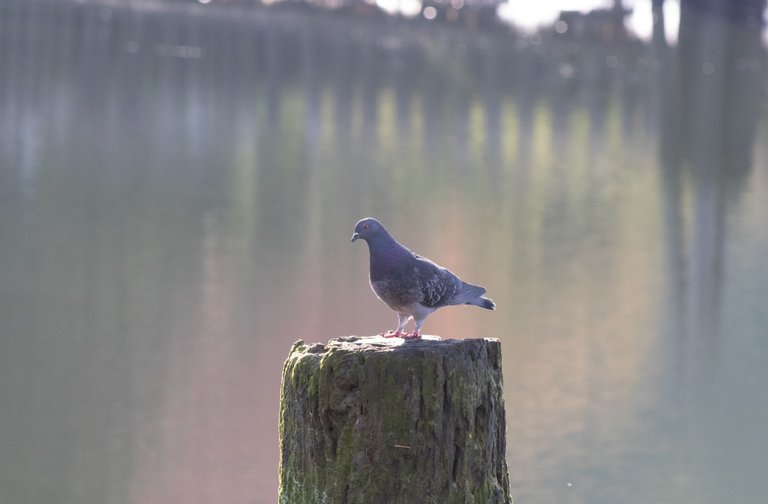
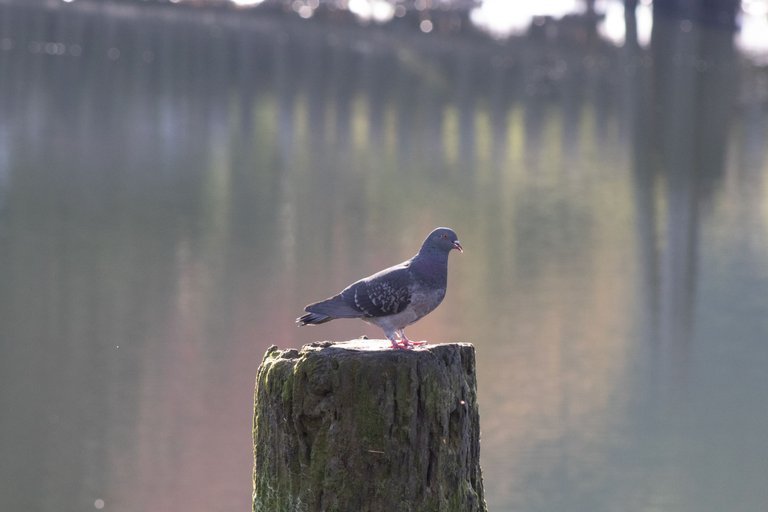
The pigeon on the dock piling soon rejoined its partner, on an old concrete pier just to my right.
First a peek to see if I was still watching.
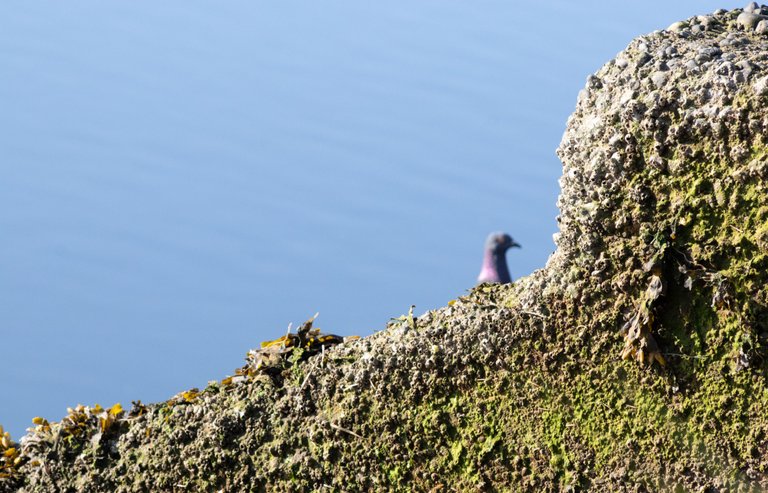
Then its partner braved showing itself.
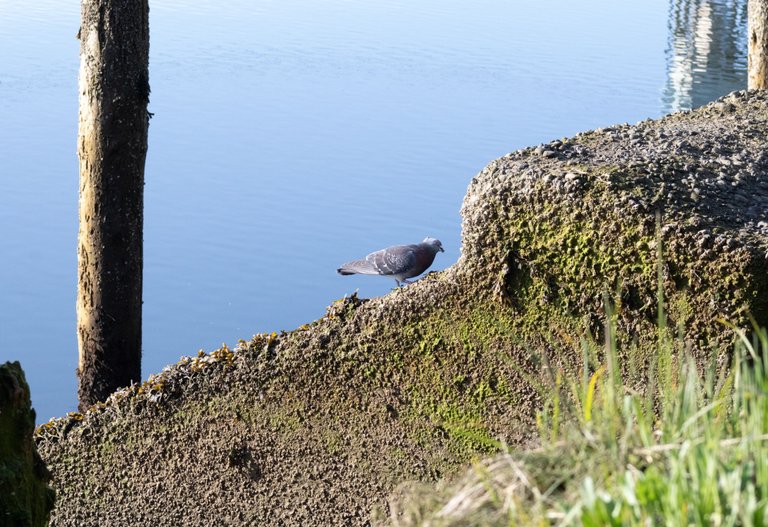

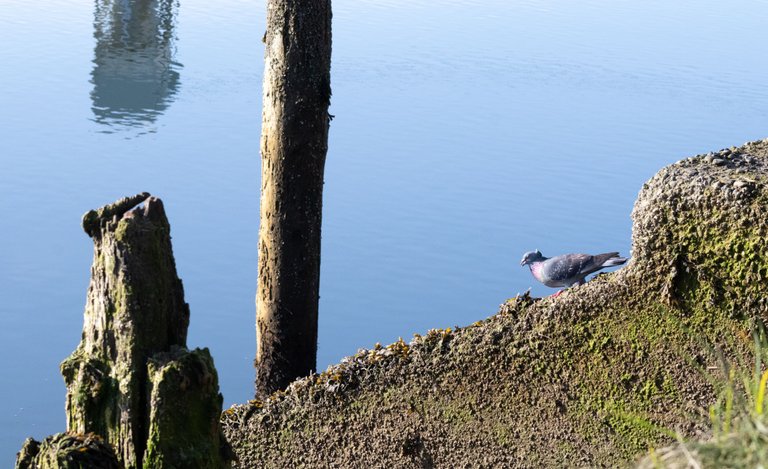
I wanted to call this second pigeon the male of the pair, because of the tuft at the back of its head.
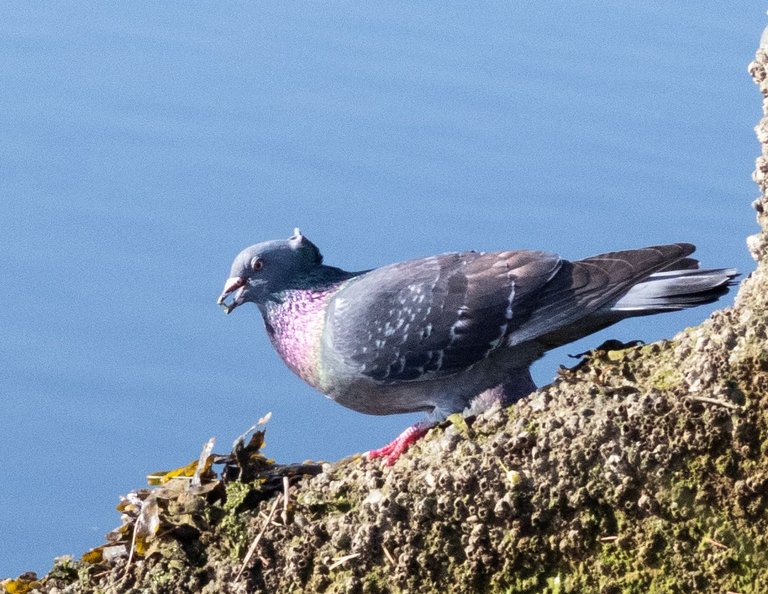

Cornell's All About Birds does not mention this feature on pigeons, and from my digging around online it appears the tuft (or head crest, as the literature calls it) doesn't have anything to do with the sex of the bird.
According to this 2013 article by the U.S. National Science Foundation, pigeon head crests are the result of a mutant gene, which
affects pigeon embryos by reversing the direction of feather buds--from which feathers later grow--at a molecular level.
So that tuft is simply feathers growing backwards at the back of its neck!
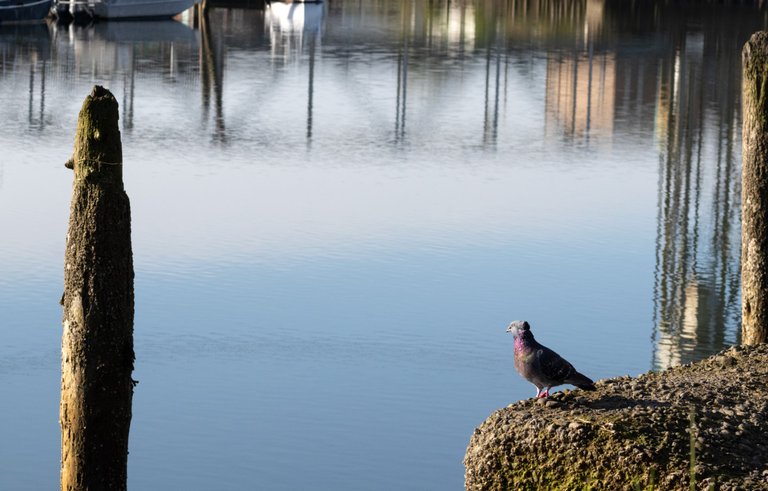
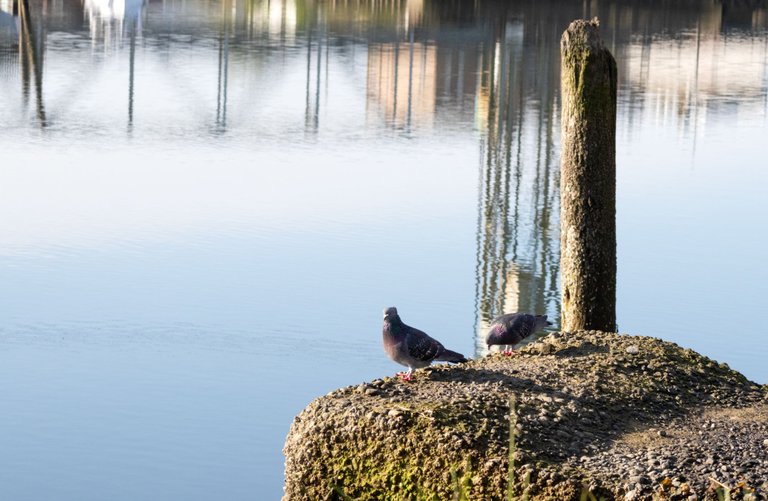
The pigeons busied themselves atop the concrete for a few more moments before fluttering off. (Too bad I'm a bit of a newbie when it comes to wildlife photography – when they took off, my reaction was to freeze, rather than snapping the shutter to actually catch them in flight!)
I turned back to the Canada goose to see it drifting across the lakelike river...
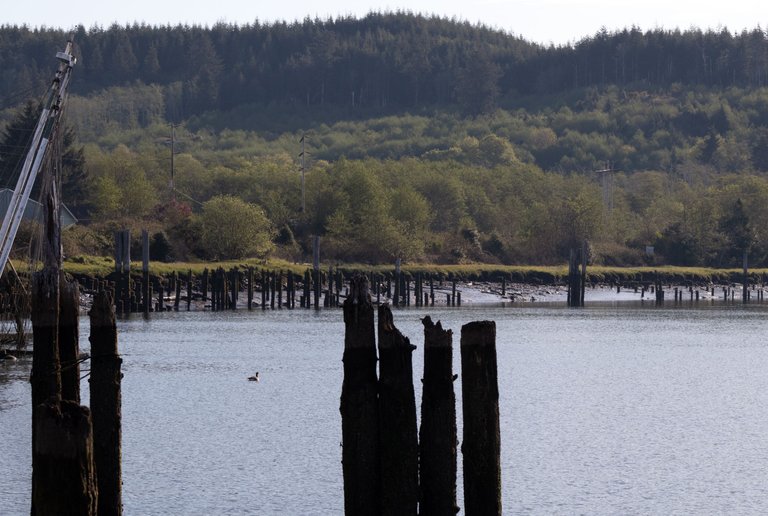
...to hide itself in the haze of color on the far bank.
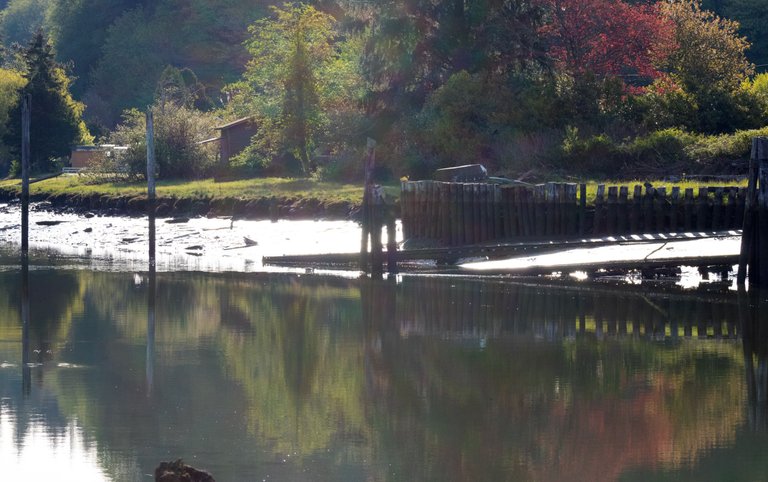
Thanks for viewing!

What a beautiful place to visit @cliffagreen, especially if there are birds to photograph, your photographs are beautiful
The pigeons are always present
They are always around, it seems, and honestly I never appreciated their beauty until I photographed them.
How great that spring has arrived and you are enjoying this beautiful place dear friend @cliffagreen
Canadian geese are really beautiful
I take this opportunity to wish you a wonderful day.
What I did not mention is that I visit this location almost everyday; it is one of my favorite spots in the neighborhood. Thanks for viewing!
My favorite photo is the very first one, which so beautifully captures that early spring green on the trees. The scene appears to be so peaceful! Glad you had some birds come by to entertain you and provide photo-ops!
Yes, that green is awesome. It's my favorite too. Thanks for sharing it. :)
I liked this set a lot, for its light and for the textures as well; with this being the best part:
Thank you, @qwerrie! Interesting choice.